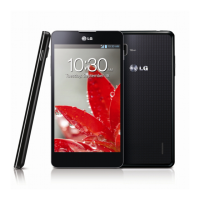Index 205
traffic or hazardous weather conditions. Rain, sleet, snow, and ice can be hazardous,
but so is heavy traffic. As a driver, your first responsibility is to pay attention to the road.
11.
-do” list while driving a car, you are not watching
where you are going. It is common sense. Do not get caught in a dangerous situation
because you are reading or writing and not paying attention to the road or nearby
vehicles.
12. Dial sensibly and assess the traffic; if possible, place calls when you are not moving or
before pulling into traffic. Try to plan your calls before you begin your trip or attempt to
coincide your calls with times you may be stopped at a stop sign, red light, or otherwise
stationary. But if you need to dial while driving, follow this simple tip - dial only a few
numbers, check the road and your mirrors, then continue.
13. Do not engage in stressful or emotional conversations that may be distracting. Stressful
or emotional conversations and driving do not mix; they are distracting and even
dangerous when you are behind the wheel of a car. Make people you are talking with
aware you are driving and if necessary, suspend conversations which have the potential
to divert your attention from the road.
14. Use your wireless phone to call for help. Your wireless phone is one of the greatest tools
you can own to protect yourself and your family in dangerous situations -- with your
phone at your side, help is only three numbers away. Dial 911 or other local emergency
number in the case of fire, traffic accident, road hazard, or medical emergency.
15. Use your wireless phone to help others in emergencies. Your wireless phone provides
an” in your community. If you see an
auto accident, crime in progress or other serious emergency where lives are in danger,
call 911 or other local emergency number, as you would want others to do for you.
16. Call roadside assistance or a special wireless non-emergency assistance number when
necessary. Certain situations you encounter while driving may require attention, but are
not urgent enough to merit a call for emergency services. But you can still use your
wireless phone to lend a hand. If you see a broken-down vehicle posing no serious
hazard, a broken traffic signal, a minor traffic accident where no one appears injured or a
vehicle you know to be stolen, call roadside assistance or other special non-emergency
wireless number.
17. The above tips are meant as general guidelines. Before deciding to use your mobile
device while operating a vehicle, it is recommended that you consult your applicable
regulations may prohibit or otherwise restrict the manner in which a driver may use his or
her phone while operating a vehicle.

